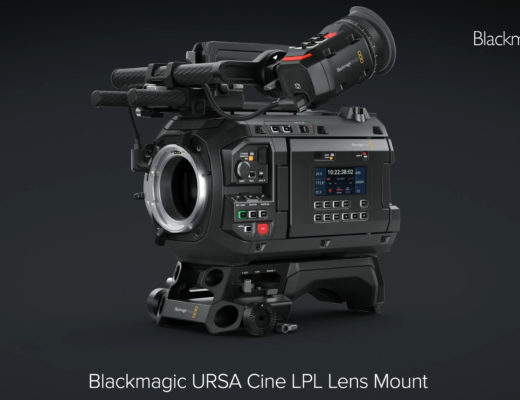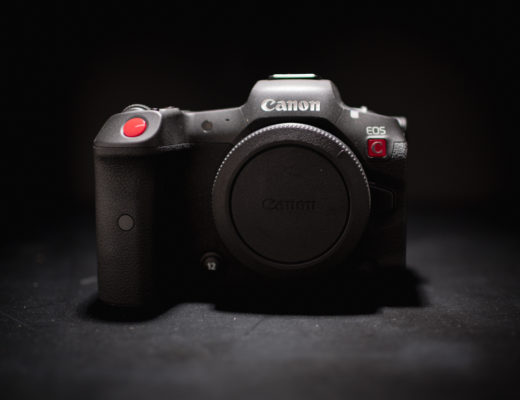Here’s the deal: there’s this thing called “pulse width modulation,” and under certain conditions it doesn’t play well with rolling shutter cameras. Most of the time it’s no problem, but we don’t get phone calls from post when there’s no problem. Here’s how to avoid that phone call.
I recently shot a quick project for a major cell phone manufacturer and while lighting “phone in the hand” product shots with a somewhat uncommon LED light I discovered dozens of little roll bars in the image. The roll bars only appeared if the LED light was dimmed. I’ve written about this kind of roll bar issue here, but only when dealing with discharge sources powered by failing ballasts. There was nothing wrong with this light, it worked exactly as it was supposed to.
This rolling effect is the result of shooting a flickering light source with a rolling shutter camera. It’s not something that can be fixed in post. I reproduced the effect later with my Nikon D7000, using the same light and shooting a test chart in my spare bathroom (the only light-tight place in my home during the day).
I enhanced the contrast to make the roll bars more visible.
This particular kind of roll bar is insidious. It generally can’t be seen in a viewfinder, the refresh rate on some LCD monitors isn’t fast enough to emphasize it, but it sure does show up well in an edit suite. The offender is called “pulse width modulation,” and it’s the most common way to dim an LED light. There are a million variations, but the most basic version does what you see in the video above. Here’s the deal:
Normal tungsten lights are dimmed by reducing the voltage running through the filament. LED lights run on electrical current, not voltage, and current is much more difficult to control. The simplest way to dim an LED fixture is to pulse it on and off so fast that the fixture outputs less light over time without your eye, or the camera, noticing the pulses. When the light is on full there’s no pulsing at all, just one long wave of current, but as soon as you touch the dimmer control the fixture changes that steady flow of current into a series of extremely fast pulses.
The simplest example I can give is this:
Full on is constant current: ________________________________________________
The same light dimmed, with pulsed current: – – – – – – – – – – – – – – – – – – – – – – – – – – – – – – – – – – – – – –
There are a number of ways to hide this flicker effect, including varying the pulses themselves so that some are longer or shorter than others to make a “cycle within the cycle,” or pulsing the light thousands of times per second so that the length of the pulse doesn’t matter anymore because there are so many of them. Not every LED light is dimmed in this manner, not every variety of pulse width modulation is inherently evil, and not every camera is sensitive to it (although rolling shutter cameras are the most sensitive by far). I am, however, the second person I know to run into this in the field so it must be somewhat common.
There is no obvious solution, such as shooting with a 1/60th of a second (144 degree) shutter, because the LED itself is powered by DC current which doesn’t change direction 120 times per second the way AC does. DC current is generally smooth, clean and mostly free of the oscillations found in AC current. The “pulse” in pulse width modulation has nothing to do with the power feeding the light: it is completely driven by a processor within the light itself. The roll bars don’t come about as a result of a lamp failure, they come about because of the way the lamp is designed.
I haven’t seen this issue arise with global shutter cameras, probably because the entire sensor exposes at once which minimizes exposure changes between frames. Rolling shutter cameras expose different parts of the sensor at different times, so part of the sensor will see a pulse where another part won’t. Global flicker can often be fixed in post, but rolling flicker can’t.
I don’t mean to be alarmist because this doesn’t happen with every LED panel. I’ve only run into one so far and heard of another secondhand, and I’ve used a half dozen others at various times without incident. When I run into something like this, however, I like to know what’s behind it so I can determine what the odds are that I’m going to run into this on my next shoot. The trick is that no manufacturer will tell you what’s going on inside their light specifically: they may tell you that they use pulse width modulation but they most likely won’t tell you how the pulses are structured. A little research on my part has turned up the fact that they aren’t worried about you learning their secret sauce as much as they don’t want their competition to sue them for infringing on a patent. The LED lighting industry is extremely litigious.
The solution seems to be to test new lighting fixtures. I’m not talking about testing individual units, just one sample of a product line. Aim the light at an non-textured surface, such as a white or gray card, and shoot several shots with a rolling shutter camera (RED ONE’s or Canon 5D’s seem to work best) and a variety of different dimmer settings, adjusting the camera exposure to compensate for the dimming. Watch the results on a laptop or edit system and look for tiny roll bars. It helps to scrub through the video player’s timeline very quickly, as that emphasizes movement in the frame.
One person I spoke to suggested that the fastest way to detect flicker is to actually shoot the light fixture with the camera and see if the surface of the light “ripples.” I tried that and discovered that this doesn’t work on lights that incorporate multiple LED’s, like the ones that change color temperature, because some LEDs will flicker a lot and others won’t depending on the color mixture. A warm daylight setting, for example, will see all the cool LEDs at full strength and the orange LEDs dimmed a fair bit.
There are a lot of lights out there that use flavors of pulse width modulation and don’t cause any issues at all, but I know of two lights that do. Knowledge is power, so modulate that power and check your LED fixtures to make sure they play nicely with your chosen camera. I sleep much better at night knowing that I’ve minimized the odds of a panicked phone call from the edit suite at 2am, and I suspect you will too.
Art Adams is a DP with a power trip: a DC power trip. His website is at www.artadamsdp.com.

Filmtools
Filmmakers go-to destination for pre-production, production & post production equipment!
Shop Now













